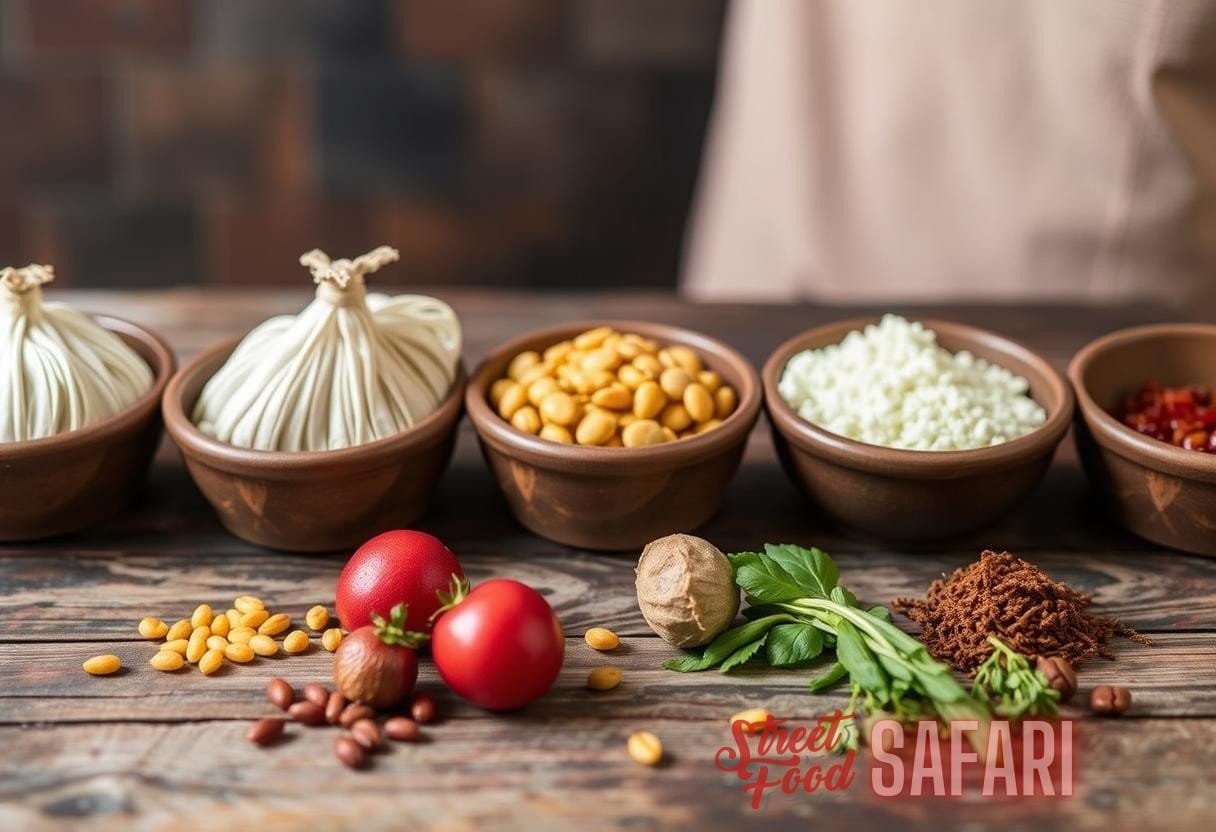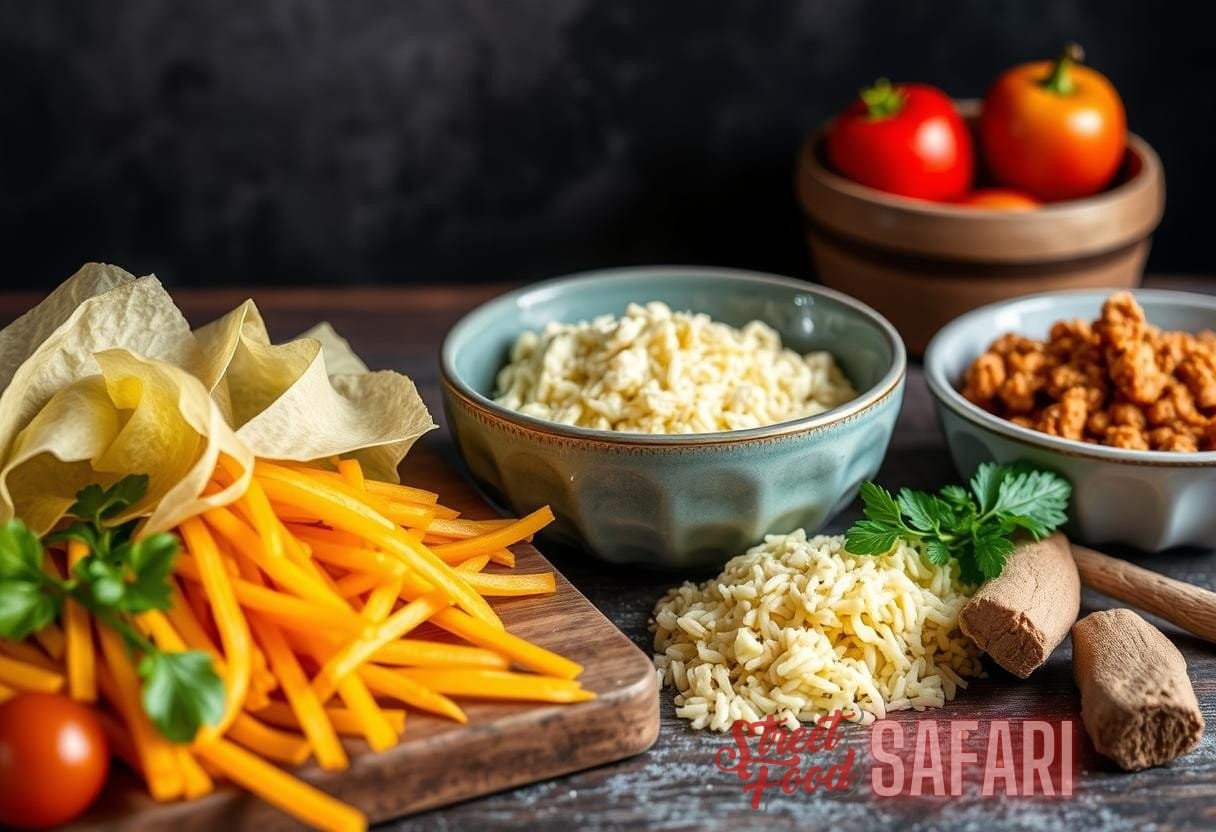Unraveling Flavor Histories: The Nutritional and Cultural Science Behind Rediscovered Local Delicacies
In recent years, there has been a significant revival of interest in local culinary traditions and their distinct flavors. This phenomenon, often referred to as a reconnection to local flavor heritage, stems from a growing awareness of the nutritional and cultural significance of these foods. The rediscovery of local delicacies provides a richer understanding of regional identity, culinary practices, and health.
The Importance of Local Delicacies
Local delicacies serve as a bridge to the past, showcasing regional diversity and the historical practices that have shaped culinary identities. Often, these foods are prepared using time-honored techniques, emphasizing the importance of local flavor heritage. The relevance of these delicacies can be attributed to several key factors:
- Cultural Identity: Local foods reflect the history and traditions of the communities that produce them.
- Nutritional Benefits: Many local dishes utilize fresh, seasonal ingredients that contribute to a balanced diet.
- Economic Impact: Support for local agriculture and food producers contributes to local economies.
The Nutritional Science of Local Delicacies
Local delicacies are often associated with nutritional benefits due to their reliance on fresh, seasonal ingredients. Research indicates that consuming locally-sourced foods can enhance overall health, leading to an increased intake of vitamins, minerals, and antioxidants.
Freshness and Nutrient Density
Many studies suggest that fruits and vegetables lose some nutritional value over time after being harvested. Local delicacies, often harvested at peak ripeness and consumed shortly thereafter, tend to have higher nutrient density. According to a study published in the Journal of Agricultural and Food Chemistry, produce that is eaten soon after harvesting can retain more vitamins and minerals compared to items that travel long distances to reach consumers.
Diversity of Ingredients
Local delicacies often comprise a variety of ingredients that not only reflect the geography but also the agricultural practices of the area. For example:
- Southern U.S. Cuisine: Incorporates ingredients like collard greens and black-eyed peas, which are rich in vitamins K and A.
- Mediterranean Diet: Emphasizes olive oil, legumes, and fresh vegetables, contributing to heart health.
- Andean Traditions: Utilize quinoa and diverse tubers, which are sources of protein and essential nutrients.
Cultural Significance of Local Delicacies
Local delicacies are more than just food; they are a testament to a community’s cultural heritage that has evolved over generations. They often tell stories and highlight the traditional practices and rituals of a region.
Preservation of Culinary Traditions
The resurgence of interest in traditional cooking methods has sparked a movement to preserve culinary heritage:
- Revival of Ancestral Recipes: Many chefs and home cooks are exploring recipes passed down through generations, ensuring they are not forgotten.
- Promotion of Local Ingredients: A focus on locally-sourced ingredients strengthens community ties and promotes sustainable agriculture.
Case Study: The Slow Food Movement
The Slow Food Movement is an example of a global effort to promote local food traditions and sustainable practices. Founded in Italy in the 1980s, it has expanded internationally, encouraging people to appreciate seasonal and local cuisine. This movement emphasizes:
- Ease of accessibility to local delicacies
- The importance of educating consumers on the origins of their food
- Support for local farmers and markets
The Role of Technology in Rediscovery
Technological advancements have facilitated the rediscovery and promotion of local delicacies. Social media and food blogs connect consumers with local producers, sharing recipes and cooking techniques.
Impact of Social Media on Culinary Trends
Platforms like Instagram and Pinterest are flooded with images of local dishes, creating a visual narrative that draws attention to regional flavors. This influence often translates into a renewed interest in cooking and enjoying local foods. A study by Food Research International highlights that social media has been pivotal in spreading awareness about local food culture.

E-commerce Platforms for Local Foods
Online marketplaces have opened doors for local producers to sell their products directly to consumers. For instance, LocalHarvest connects users with local farms and contrives a new avenue for traditional food products, enhancing community engagement.
Challenges Facing Local Delicacies
While rediscovery of local delicacies is gaining momentum, several challenges threaten their preservation. Understanding these obstacles is vital to fostering a sustainable culinary landscape:
Globalization of Food Culture
The globalization of the food market has led to a homogenization of tastes. Fast food and mass-produced items overshadow local dishes, diminishing their prevalence. A report by Food & Nutrition discusses the risks globalization poses to local cuisines.
Loss of Traditional Knowledge
The passing down of culinary skills from generation to generation is fading, as younger generations are attracted to modern culinary trends. Efforts must be made to preserve traditional cooking methods through education and community engagement.
Reviving Local Flavor Heritage Through Education
Education plays a crucial role in ensuring that local delicacies continue to thrive. Schools and community programs can incorporate local culinary traditions into their curricula, fostering appreciation and understanding among young generations.
Community Workshops and Culinary Classes
Local organizations and chefs often conduct workshops to teach cooking techniques specific to regional delicacies. These classes not only impart skills but also educate participants about the significance of the ingredients used:
- Seasonal Cooking Classes: Focusing on the importance of fresh and local ingredients.
- Heritage Cooking Workshops: Teaching traditional recipes and techniques.
Local Flavor Heritage and Global Perspectives
The global perspective on local delicacies reflects the diversity of culinary practices that enrich our world. Understanding this interconnectedness can enhance appreciation for different cultures and their distinct flavors.
Influences of Immigrant Communities
Immigrant communities often bring their local delicacies with them, leading to innovative culinary fusions. For example, the adoption of traditional Indian spices and cooking methods has transformed American culinary landscapes, creating dishes that represent a blend of cultures.
The Role of Food Festivals
Food festivals celebrating local cuisine provide an opportunity for visitors and locals alike to engage with culinary heritage. Festivals such as the Maine Lobster Festival or New Orleans Jazz & Heritage Festival incorporate food tastings that highlight and celebrate regional specialties.
The Future of Local Delicacies
The future of local delicacies appears bright as more individuals recognize their nutritional, cultural, and economic importance. Strategies to enhance their prominence in our diets include:
- Support Local Producers: Engage with farmers’ markets and support local businesses that prioritize regional ingredients.
- Advocate for Agricultural Practices: Promote sustainability and ethical practices in local food production.
- Preserve Recipes and Techniques: Encourage sharing of traditional cooking methods through communities and social platforms.
Conclusion: A Call to Embrace Local Flavor Heritage
The journey into the world of local delicacies is both a gastronomic adventure and a cultural exploration. Delving into local flavor heritage allows for a greater appreciation of the connections between food, health, and culture. By understanding the nutritional and cultural significance of these delicacies, individuals can make informed decisions about their dietary choices and contribute to the preservation of their culinary heritage.


